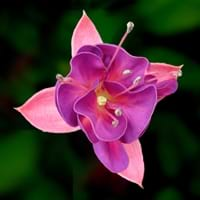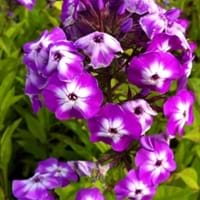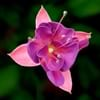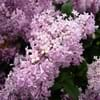Life Span
Perennial
Perennial
Type
Tender Perennial
Flowering Plants
Origin
Caribbean
Hybrid origin, North America
Types
Fuchsia Decidua, Fuchsia Fulgens, Fuchsia Splendens, Fuchsia Microphylla
Not Available
Number of Varieties
Not Available
Habitat
Forest edges, Woods
Prairies, Woodlands
USDA Hardiness Zone
9-10
4-8
Sunset Zone
16, 17, 23, 24
1a, 1b, 2a, 2b, 3a, 3b, 4, 5, 6, 7, 8, 9, 10, 11, 12, 13, 14, 18, 19, 20, 21
Habit
Arching/Fountain-shaped
Upright/Erect
Flower Color
Orange Red
White, Pink, Light Pink
Flower Color Modifier
Not Available
Bicolor
Fruit Color
Not Available
Not Available
Leaf Color in Spring
Purple, Dark Green
Green
Leaf Color in Summer
Purple, Dark Green
Green
Leaf Color in Fall
Purple, Dark Green
Green
Leaf Color in Winter
Unknown
Not Available
Leaf Shape
Long Linear
Lanceolate
Plant Season
Spring, Summer, Fall, Winter
Summer, Fall
Sunlight
Full Sun, Partial Sun, Partial shade
Full Sun, Partial Sun
Growth Rate
Medium
Medium
Type of Soil
Clay, Loam, Sand
Clay, Loam, Sand
The pH of Soil
Acidic, Neutral
Acidic, Neutral, Alkaline
Soil Drainage
Average
Well drained
Bloom Time
Indeterminate
Summer, Late Summer, Early Fall, Fall
Tolerances
Drought
Not Available
Where to Plant?
Container, Ground, Pot
Ground
How to Plant?
Seedlings, Stem Planting, Transplanting
Seedlings, Stem Planting, Transplanting
Plant Maintenance
Medium
Medium
Watering Requirements
Requires regular watering
Water more in summer, Water when soil is dry
In Summer
Lots of watering
Lots of watering
In Spring
Moderate
Moderate
In Winter
Average Water
Average Water
Soil pH
Acidic, Neutral
Acidic, Neutral, Alkaline
Soil Type
Clay, Loam, Sand
Clay, Loam, Sand
Soil Drainage Capacity
Average
Well drained
Sun Exposure
Full Sun, Partial Sun, Partial shade
Full Sun, Partial Sun
Pruning
Prune in spring, Prune lower leaves, Remove dead or diseased plant parts, Remove deadheads, Remove shoots
Remove damaged leaves, Remove dead branches, Remove dead leaves
Fertilizers
All-Purpose Liquid Fertilizer
All-Purpose Liquid Fertilizer
Pests and Diseases
Rhizoctonia Root Rot, Rust
Cercospora leaf spot, Downy mildew, Leafminers, Nematodes, Powdery mildew, Red blotch, Septoria leaf spot
Plant Tolerance
Drought
Drought
Flower Petal Number
Single
Single
Foliage Texture
Medium
Medium
Foliage Sheen
Matte
Matte
Attracts
Hummingbirds
Caterpillar, Flying insects, Insects
Allergy
Asthma, Hay fever
Not Available
Aesthetic Uses
Showy Purposes
Beautification
Beauty Benefits
Not Available
Not Available
Edible Uses
Unknown
Not Available
Environmental Uses
Air purification
Air purification
Medicinal Uses
Not Available
Diarrhea, Stomach aliments
Part of Plant Used
Flowers, Fruits
Leaves, Root
Other Uses
Not Available
Used for its medicinal properties
Used As Indoor Plant
Yes
Yes
Used As Outdoor Plant
Yes
Yes
Garden Design
Bedding Plant, Container, Feature Plant, Foundation, Hedges, Tropical
Container, Cutflower, Mixed Border, Wildflower
Botanical Name
FUCHSIA triphylla
PHLOX paniculata
Common Name
Fuchsia
Garden Phlox, Tall Phlox
In Hindi
फ्यूशिया
Fall Phlox
In German
Fuchsie
fall phlox
In French
Fuchsia
Fall Phlox
In Spanish
Fucsia
Fall Phlox
In Greek
φουξία
Fall Phlox
In Portuguese
Fúcsia
Fall Phlox
In Polish
Fuksja
Fall Phlox
In Latin
Fuchsia
Phlox cadent
Phylum
Magnoliophyta
Magnoliophyta
Class
Dicotyledonae
Magnoliopsida
Family
Onagraceae
Polemoniaceae
Clade
Angiosperms, Eudicots, Rosids
Angiosperms, Asterids, Eudicots
Tribe
Not Available
Not Available
Subfamily
Not Available
Not Available
Importance of Fuchsia and Fall Phlox
Want to have the most appropriate plant for your garden? You might want to know the importance of Fuchsia and Fall Phlox. Basically, these two plants vary in many aspects. Compare Fuchsia and Fall Phlox as they differ in many characteristics such as their life, care, benefits, facts, etc. Every gardener must at least have the slightest clue about the plants he wants to plant in his garden. Compare their benefits, which differ in many ways like facts and uses. The medicinal use of Fuchsia is Not Available whereas of Fall Phlox is Diarrhea and Stomach aliments. Fuchsia has beauty benefits as follows: Not Available while Fall Phlox has beauty benefits as follows: Not Available.
Compare Facts of Fuchsia vs Fall Phlox
How to choose the best garden plant for your garden depending upon its facts? Here garden plant comparison will help you to solve this query. Compare the facts of Fuchsia vs Fall Phlox and know which one to choose. As garden plants have benefits and other uses, allergy is also a major drawback of plants for some people. Allergic reactions of Fuchsia are Asthma and Hay fever whereas of Fall Phlox have Not Available respectively. Having a fruit bearing plant in your garden can be a plus point of your garden. Fuchsia has no showy fruits and Fall Phlox has no showy fruits. Also Fuchsia is flowering and Fall Phlox is not flowering . You can compare Fuchsia and Fall Phlox facts and facts of other plants too.





